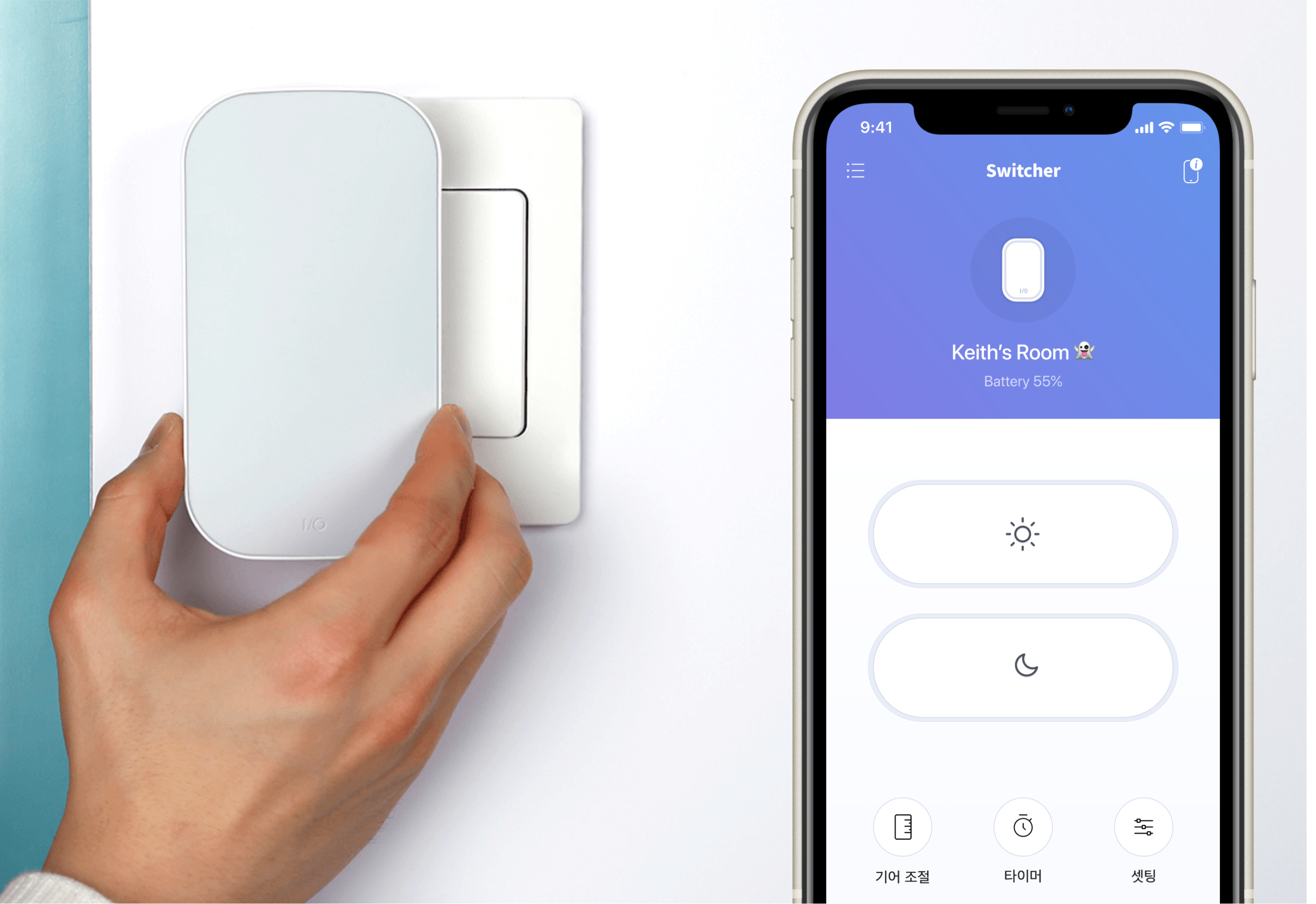
Switcher is a smart light controller targeting a single or a married couple household in South Korea. The target user is aged 25 to 35 years old, living in a studio or one-bedroom apartment.
←Back
SarahSehee
Designed visual solutions in the iterative product development process to introduce Switcher Timer and increase the conversion rate.
Aug. 2016 - Sep. 2016
Feb. 2017 - Mar. 2017

Switcher is a smart light controller targeting a single or a married couple household in South Korea. The target user is aged 25 to 35 years old, living in a studio or one-bedroom apartment.

Switcher Timer turns on and off the light automatically, even without
constant Bluetooth pairing. A user can save a timer on the device by connecting Switcher app and a hardware
controller via Bluetooth.

As a hardware product, Switcher had a unique business model in 2017. A potential customer could apply for a 30-days free trial from the Switcher website. After the trial, he or she can pay for one of four subscription plans. We set the percentage of users who subscribed after the free-trial as the conversion rate.
Belief
Based on our hypothesis, the product team ran two weeks duration sprint twices. My role was to discover user problems around Switcher Timer and synthesize solutions.
Sprint 1
⭐️Users can learn about Switcher Timer and test it in onboarding process by following three popups in sequence.
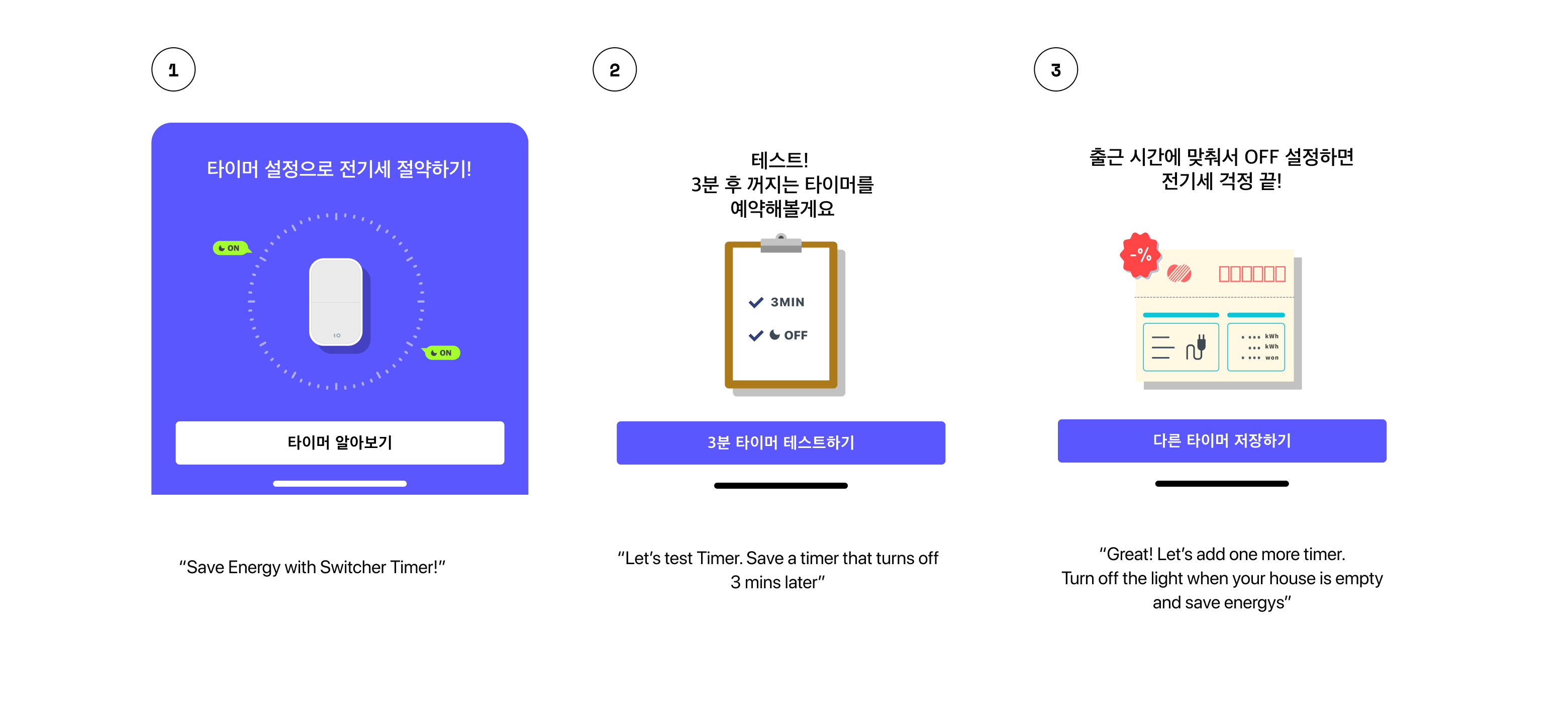
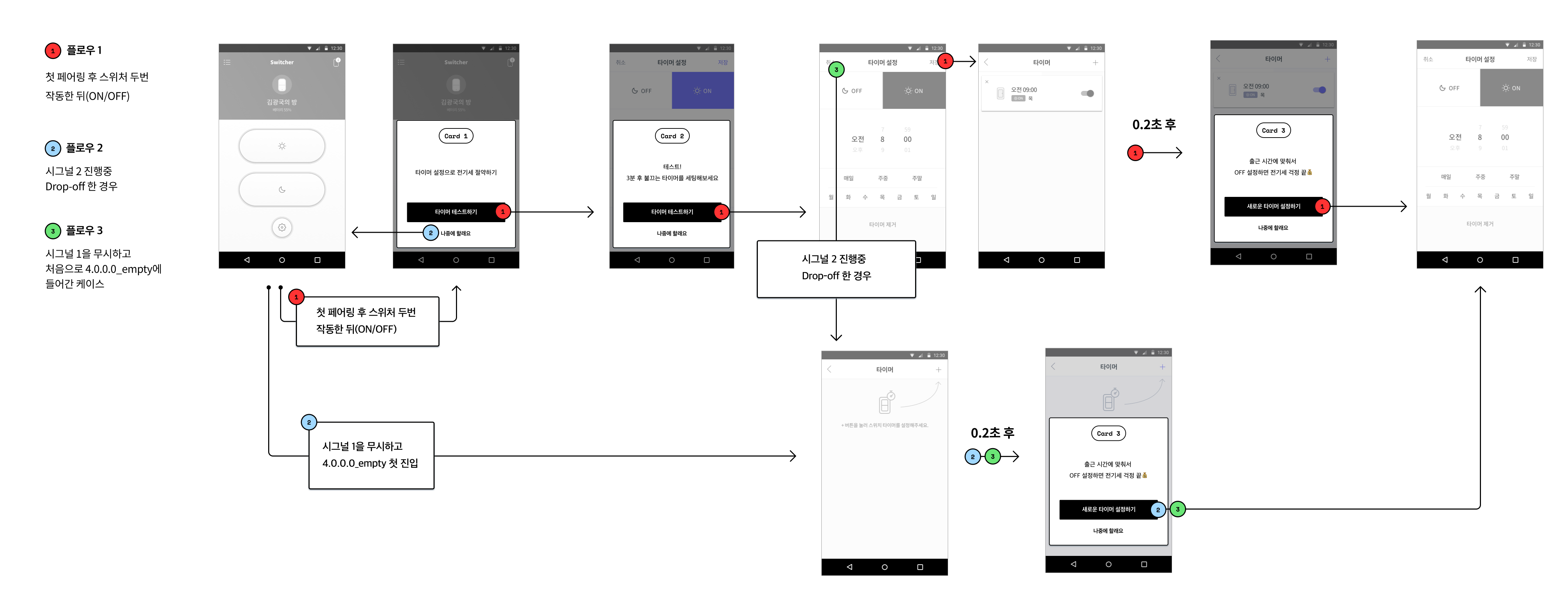
After two weeks, we reviewed GA to track the performance of the design. And we found out that there was 64% drop-off rate in the 1st popup, 79% in the 2nd popup, and 62% in the last pop up.
We all agreed that designing and developing the popup guide cost less but not an intuitive way to introduce important information. Users perceived it as more intrusive, so we moved on to find a better solution.
Before starting the second sprint, we ran a survey to users on free trials. First, we asked how many timers they used. Then, we asked if they are willing to pay for subscriptions after the free trial. Surprisingly, the free-to-paid conversion rate was 1.5 times higher if a user set more than three timers than users set no timers at all.
Revised Belief
Since we found out that the number of timers affects the conversion rate, I focused more on "why users don't use more than two timers."
I ran another qualitative research with the marketer. The goal was to observe how the converted users use Switcher Timer and to discover key use cases for our target users.
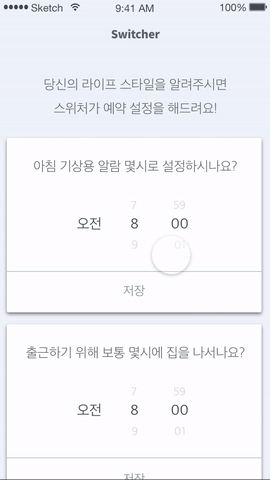
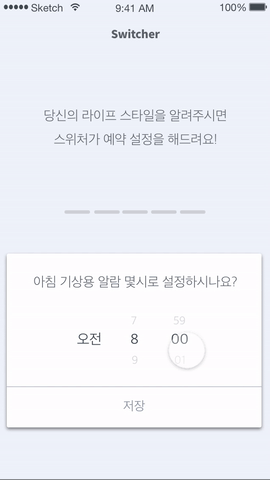
In the early design process, I used ProtoPie to iterate and validate interactions quickly. It was the first experiment to design an interactive design with long text sentences. By running internal user testings, we gained confidence in the features and value as we iterated.
Impact
After running two 2-weeks sprints, we could validate our hypothesis: Switcher Timer affected the conversion rate indeed.